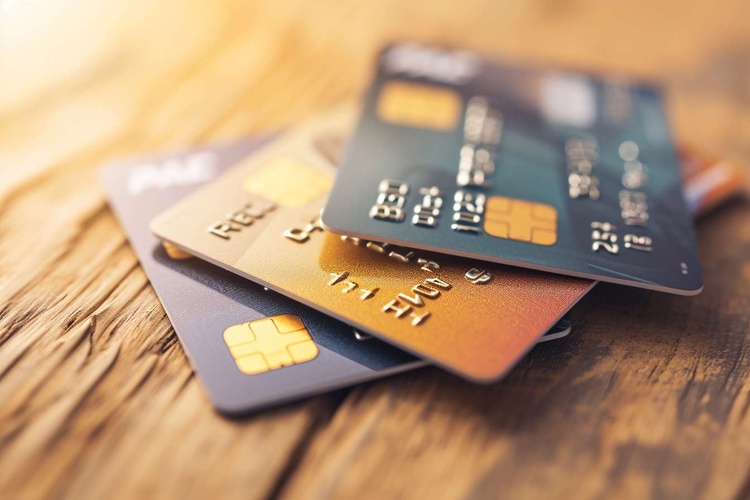Mastering Credit Cards: Smart Use, Rewards & Credit Repair
Credit cards offer convenience, fraud protection, and potential rewards, but they also affect your credit score and finances. This guide explains how credit limits, billing cycles, APR, and credit utilization work, plus tips on choosing the right card, managing debt, and rebuilding credit with secured cards. Learn practical strategies to use cards responsibly and improve your financial health.

Mastering Credit Cards: Smart Use, Rewards & Credit Repair
Credit cards are powerful financial tools when used thoughtfully. They let you buy now and pay later, earn rewards, and access consumer protections, but they can also carry high costs if mismanaged. This guide breaks down how cards work, how they influence your credit score, how to pick the best card for your needs, practical ways to handle debt, and clear steps to build or rebuild credit.
How credit cards actually work
Your credit card comes with a credit limit set by the issuer based on your income, credit score, and credit history. Every purchase reduces your available credit until you pay it back. At the end of the billing cycle you receive a statement listing transactions, the statement balance, and the minimum payment due. Paying the full statement balance by the due date generally prevents interest charges. If you carry a balance, interest accrues on the unpaid portion at the card’s APR, and that can compound quickly.
Minimum payments cover only a fraction of the principal and most of the interest on high-rate cards, so relying on minimums lengthens repayment and increases cost. Cash advances and some promotional offers may have different fees and rates, so always check the card agreement for specifics.
How credit cards affect your credit score
Credit cards are among the most influential factors in credit scoring. Key components include:
- Payment history: On-time payments are the single most important factor. Late or missed payments hurt your score and can trigger fees.
- Credit utilization: This is the percentage of your available credit you’re using. Keeping utilization below about 30% is a common guideline; lower is better.
- Length of credit history: Older accounts and longer average account age usually help your score.
- Credit mix: Having different types of credit, such as installment loans and revolving accounts, can help modestly.
- New credit inquiries: Applying for multiple cards in a short period may hurt your score due to hard pulls.
Using cards responsibly — paying on time, keeping balances low, and avoiding excessive applications — helps build credit over time.
Benefits and potential downsides
Advantages of credit cards:
- Convenience and widely accepted payment method.
- Rewards programs: cash back, points, or airline miles that match your spending habits.
- Consumer protections: fraud liability limits, chargebacks, purchase protection, and sometimes extended warranties.
- Emergency access to funds when unexpected costs arise.
- Opportunity to build a positive credit history.
Risks to watch for:
- High interest rates on carried balances can grow expensive.
- Fees such as late payment, annual, balance transfer, or cash advance fees.
- The ease of spending may lead to impulse purchases and mounting debt.
- Poor management can result in credit score damage and long-term financial consequences.
Choosing the right card for your situation
Match a card to your credit profile and goals. Consider these factors:
- Credit eligibility: Some cards require excellent credit, while others are designed for fair or bad credit.
- Annual fee vs benefits: Ensure rewards and perks outweigh any fee you pay.
- APR: If you may carry a balance, prioritize lower APRs.
- Rewards fit: Pick a rewards structure that aligns with where you spend most – groceries, travel, gas, etc.
- Introductory offers and additional perks: Sign-up bonuses, 0% introductory APRs, travel insurance, and purchase protections can add value.
Managing and reducing credit card debt
Controlling debt requires discipline and strategy. Effective methods include:
- Paying more than the minimum: Aim to clear the full balance monthly. If you cannot, pay as much above the minimum as possible.
- Budgeting: Track income and expenses, and allocate funds explicitly for debt repayment.
- Avalanche vs snowball: Avalanche targets highest-interest debts first to save money; snowball focuses on smallest balances first for psychological momentum.
- Balance transfers: Moving higher-interest debt to a 0% introductory APR card can save interest, but watch transfer fees and the post-intro APR.
- Negotiation: Contact issuers to request lower rates or fee waivers; some are willing to help responsible customers.
- Professional help: Accredited credit counseling agencies can negotiate repayment plans and offer guidance if overwhelmed.
| Card Type | Typical APR Range | Typical Annual Fee | Best Use Case |
|---|---|---|---|
| Secured card | 15% - 30% | $0 - $50 | Building or rebuilding credit with a deposit |
| Low-APR card | 12% - 18% | $0 - $95 | Carrying a balance occasionally |
| Rewards card | 16% - 25% | $0 - $550+ | Earning cash back, points, or miles on routine spending |
| Balance transfer | 0% intro for 6-21 months, then 15%+ | $0 - $95 | Consolidating high-interest debt temporarily |
| Student card | 13% - 28% | $0 - $35 | New credit users with limited history |
Cost disclaimer: Rates, fees, and terms vary by issuer and product. Always review the card agreement for exact costs and conditions.
Building or rebuilding credit with cards
If you have no credit or damaged credit, secured cards are a practical starting point. They require a refundable security deposit that typically sets your credit limit. Use the card for small, regular purchases and pay the balance in full each month to show consistent, on-time behavior. Over time, issuers may report positive activity to the credit bureaus and you may qualify for unsecured cards or limit increases.
Other tips to improve credit:
- Keep utilization low by spreading balances across cards or requesting higher limits responsibly.
- Automate payments to avoid late marks.
- Check your credit reports regularly for errors or identity theft and dispute inaccuracies promptly.
- Apply for new credit sparingly; only when it supports your goals.
Final thoughts
Credit cards can enhance convenience, provide protections, and help build credit when used with intention. Understand how billing cycles, APRs, and credit utilization influence your finances, choose cards that match your needs, and adopt repayment strategies that reduce interest and risk. With consistent, disciplined habits — paying on time, keeping balances low, and reviewing terms — credit cards become tools that support stronger financial health rather than sources of stress.






